Garden Glimpses: Lammas Lovelies
It has certainly been an odd growing season. In the six weeks from May 1 to mid-June, normally a fairly wet period, we recorded just a quarter inch of rain on the property. The ensuing six weeks, to late July, normally a fairly dry period, saw seventeen inches! About an inch a week is sufficient to keep most plants going without hydration support, but unfortunately the effect isn’t cumulative – those 17” bunched together won’t last 17 weeks, and now, as August begins, it’s looking drier again. But I’ve enjoyed the break from the Gunga Din routine that kept me hopping through last summer’s drought.
The plants seem to be doing OK adapting to such extremes, with notable exceptions. The bee balm, four small plugs that I brought with me three years ago from my west Philly garden, has spread far and wide, into huge islands of what should be vivid electric magenta color. This year, not so much. From the get-go, the bee balm flowers seemed to be dying off, past peak as soon as they opened. I assume that’s an effect of the dry late spring. Now, post-bloom, they are getting mildewed, which is probably the result of too much rain. But bee balm is tough, I have no doubt it will reassert itself as a queen of the June garden in future years.
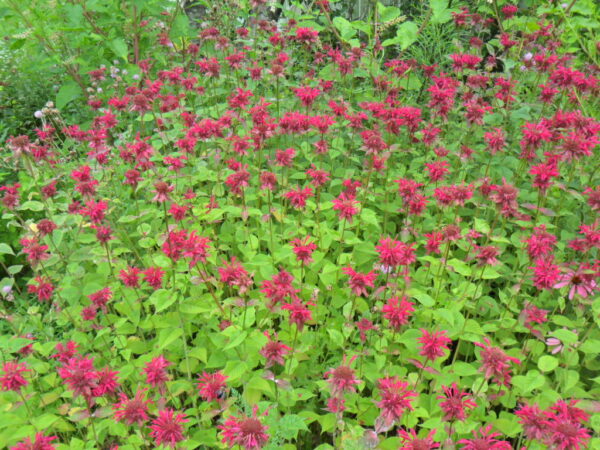
The echinacea, on the other hand, has had a blockbuster year. Normally these struggle somewhat, trying to find the balance between too much and too little water. I confess I’m probably an overly attentive parent, watering when I see wilting which is perhaps just sun droop, and not actual dryness, thus exacerbating the hydration problem. By midseason stems would blacken and die, with the loss of entire stands sometimes. But this year the early drought meant my watering was welcome, and then the frequent rains took over and kept my itchy watering can finger from pulling the trigger.
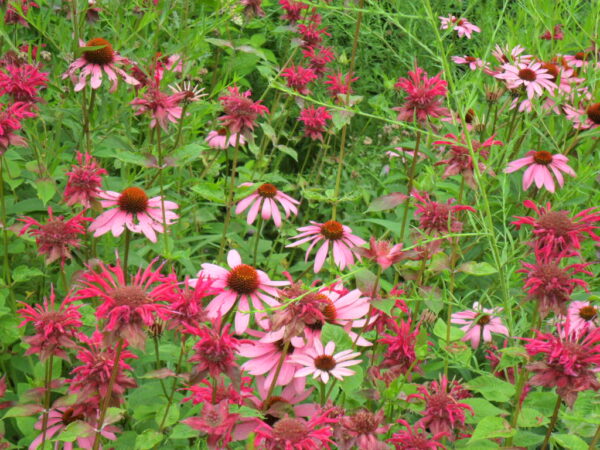
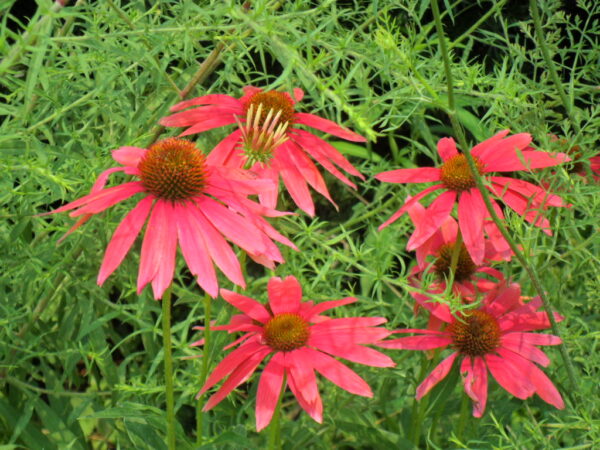
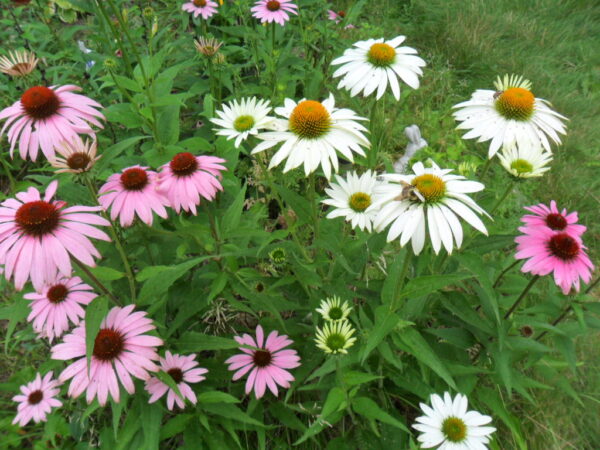
Whatever the reason, the echinacea are thriving, all across the garden. They’ve also populated their immediate spaces with lots of offspring, always a welcome sight. True, most of these are growing in mulch and leaflitter, above weed barrier which will inhibit deep rooting, so how well they do long-term is anyone’s guess, but it’s still nice to see their fecundity.
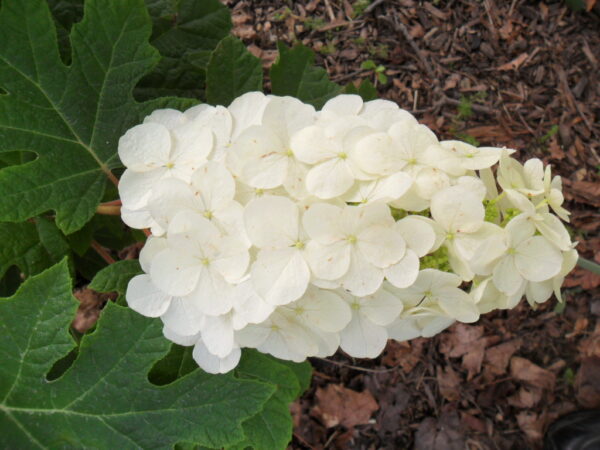
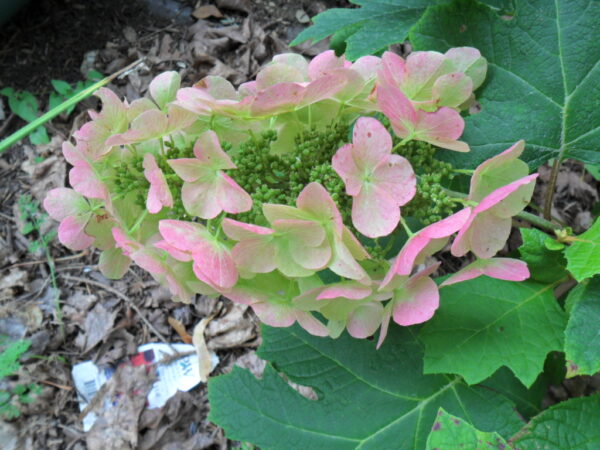
The hydrangeas are past peak, but their fading blooms change into colors just as lovely as the first burst of white. Queen of Hearts has rescued her reputation, finally, after two years, by blushing the rosy pink which gives her the name. Previously she had refused to budge from her pristine white, and I’m delighted to see her true colors.
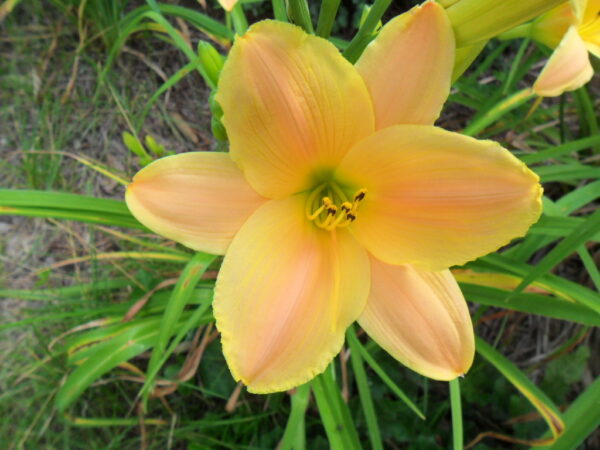
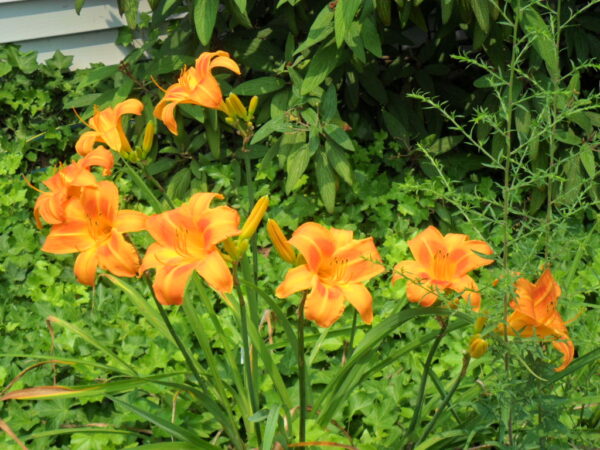

I knew to expect footlong Snowflake’s entrancing transformation to pale green blossoms with the barest suggestion of burgundy-brown at the edges, as well as Pee Wee and Anabelle’s greenish white puffballs. But what caught me unawares was Alice, which finally bloomed this spring after three years of stubborn resistance. I was startled as her flowers began to blush, unaware of the color change to ensue, but really blown away as the blush darkened to a hearty pink-purple bruise! I cannot express enough how much I love this plant, a vigorous grower with such prolific and varied bloom and the most gorgeous autumn foliage color you’ve ever seen, a mix of scarlet, orange and burgundy.



July was the heyday of the daylily, of course. I have more than forty varieties on the property, ranging from pale yellow to deepest purple. Some, now in their fourth season, have become massive clumps, and probably should be divided this fall, but I will likely wait until next year for this arduous task, with knee replacement surgery looming for me in late September.
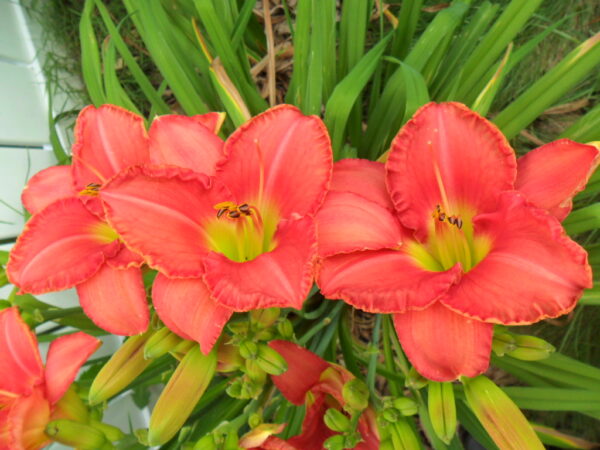
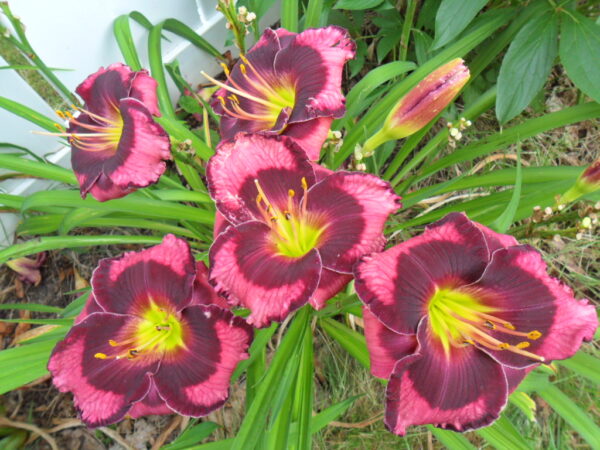
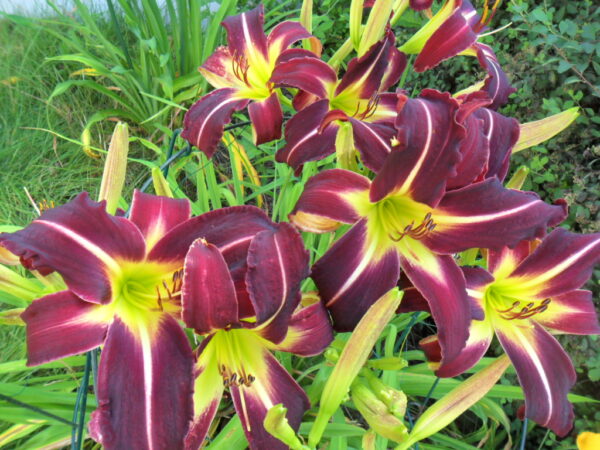
The variety displayed among daylilies is truly staggering, with plants that sport solid color blooms, others with vivid throats or contrasting eyes, some striped or streaked, some edged. Petals can be smooth or ruffled, flowers single or double, for a seemingly endless diversity of blossoms. Such a pity that each bloom only lasts a day, but prolific budding assures that most varieties will be in flower for two to three weeks, for a season that can extend up to two months, given hybrids that mature in early, middle or late season.


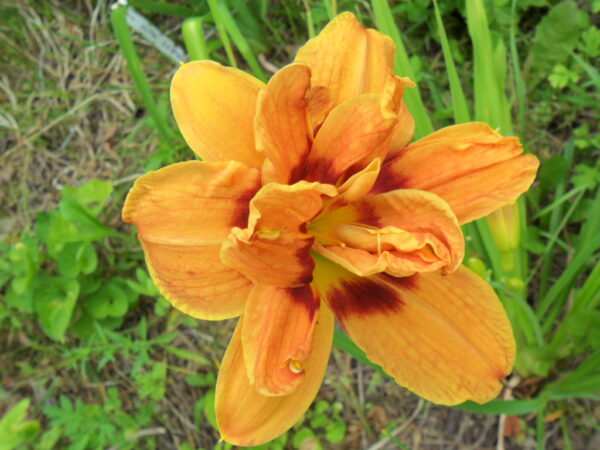
Among my favorites are the deep red-burgundy strains, including Broadway Valentine, Vintage Bordeaux, Illini Jackpot, Ed Murray and Chicago Cardinal. Creature of the Night is another excellent performer, with midnight purple petals streaked with yellow bleeding into a lime throat, but her elongated scapes aren’t strong enough to support the massive blooms, and she needs to be hooped to prevent flopping onto the ground.
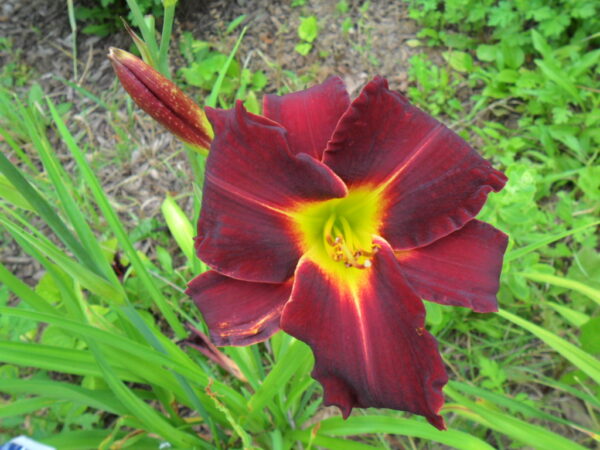
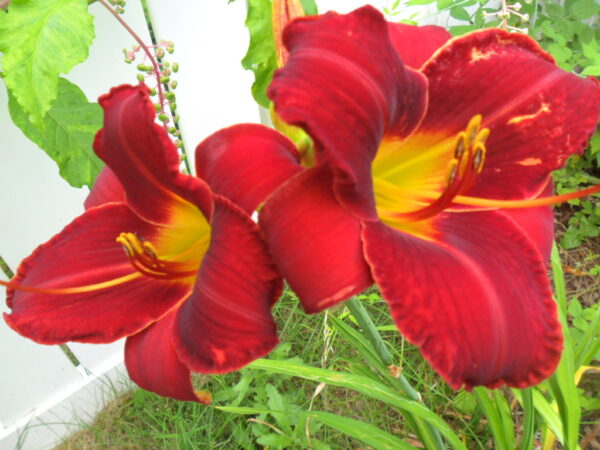

And speaking of massive blooms, I was happy to welcome King George to the family this year. I ordered this medium yellow, maroon-eyed stunner three years ago, but the grower was in short supply until last fall. King George rewarded my long wait with blooms its first season here, up to ten inches across, the largest-flowered daylily in my collection. I also waited three years for Exotic Love; though he’s been here all along, he’s been slow to bloom. I guess it’s true what they say, you can’t hurry Love, you’ve just got to wait! And the wait was well worth it as Exotic Love finally displayed its beautiful creamy yellow and purple-brown flowers.


There are other highlights of the Lammas period, including the blue-violet Stoke’s Aster, first of its family to bloom, and the medium pink, fuzzy-headed Joe Pye Weed. This native can range as high as 8-10 feet, but my dwarf variety comes in at about 5-6 feet, for a more visually accessible bloom. My perennial helianthus, Lemon Queen, is also firing up with a few tentative early blooms in medium yellow before the profusion of flowering starts mid-August. Native milkweed, such an important plant for Monarch butterfly viability, is showy with medium pink clusters of bloom, while its neighbor, my dwarf Butterfly Bush, is sending out impossibly long bloom heads in hot pink to attract bees and butterflies from all quarters.


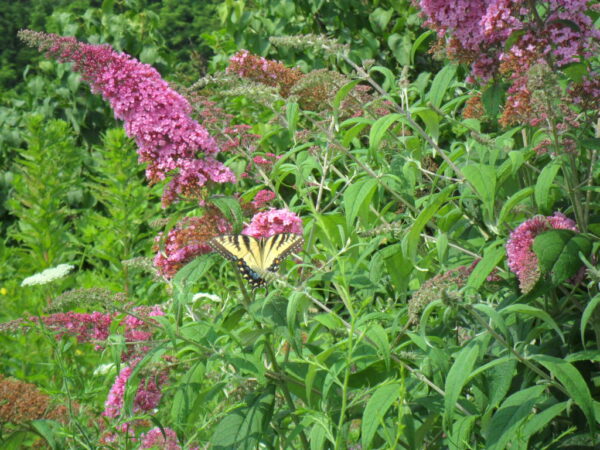
As the intended English cottage garden continues to morph into something less controlled and more meadowlike, waves of natives take turns coming into prominence. First is the dandelion, with bands of sun-spangled blossoms brightening the early spring landscape. This is followed hotly by cooling violets, whose season often overlaps the dandelion, creating a lovely contrast from these color wheel opposites. Fleabane, with its clusters of white or palest pink blossoms, is next, accompanied by the periwinkle blue flowers on my vinca groundcover. These are succeeded by lavender thistle, blooming well into July, when Queen Anne’s Lace takes over.
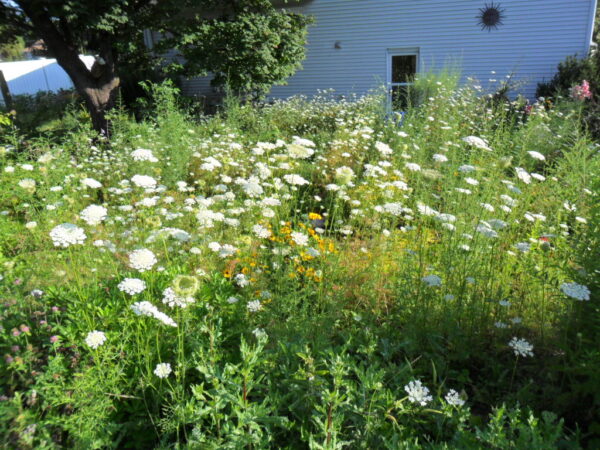
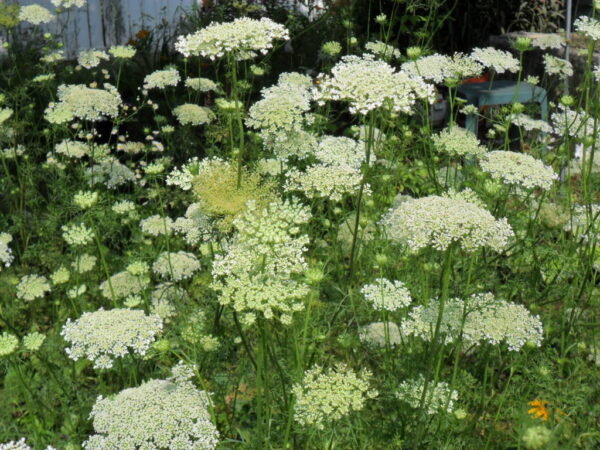
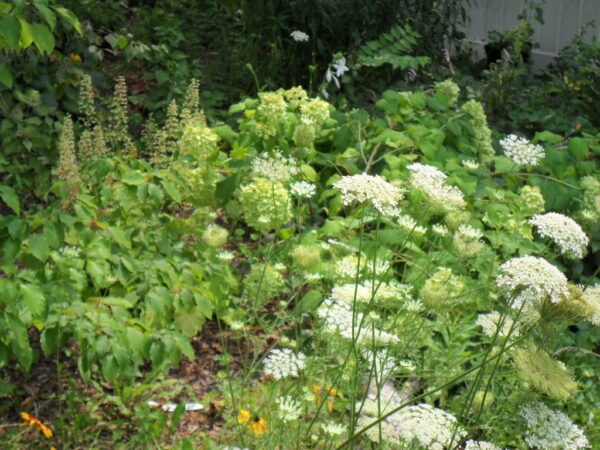
And I do mean “takes over”! This prolific native, AKA “wild carrot,” can take up to two months to fully bloom out, and sets so much seed that it becomes endemic in the garden, popping up pretty much everywhere. I wasn’t as careful about editing as I might have been earlier in the season, but now that I observe the sea of white it has produced, at a time when color is fast ebbing from the landscape, I can’t feel sorry about my lack of effort.
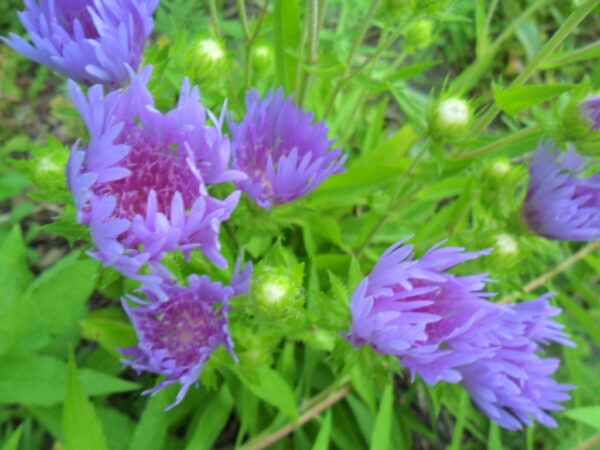
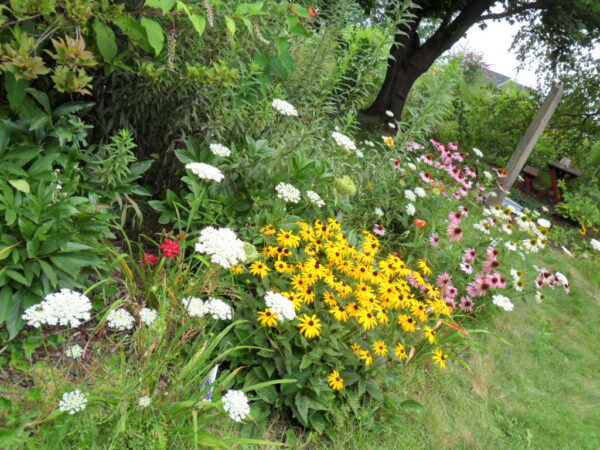
Another white wonder prominent now is common clover, which has taken over large areas of the grass path. I’m good with this, as clover is a true enhancer of the garden, fixing nitrogen from the air into the soil. It’s a fairly low groundcover, only rising to about 4-6”, and takes a good amount of foot traffic before looking bedraggled. The small white flowers are charming, and pollinators love it, though one should step carefully so as not to disturb any bees, who may not take kindly to being trod upon, and are equipped to vividly show their displeasure. I gently remind mine, when I have intruded on their lunchtime, that without me, they’d have nothing to sip on in this yard, so show some respect!


Next up will be the solidagos, native goldenrod, of which I have at least three varieties on the property, all self-sown, as well as some hybrids I introduced myself. The natives bloom earliest, starting by late August; some of the hybrids will hold their fire until almost October. This has them blooming contemporaneously with my native asters, in shades from pure white through pale lavender to bright purple. White snakeroot rounds out the show in October and November. Goldenrods are budding now, anxiously awaiting their premiere, while aster grows by leaps and bounds, forming huge, aerial masses of pale grey-green which will be covered in blossoms that are pollinator magnets; white snakeroot has been slow to find its footing, but I see it now spreading out in various areas across the garden.
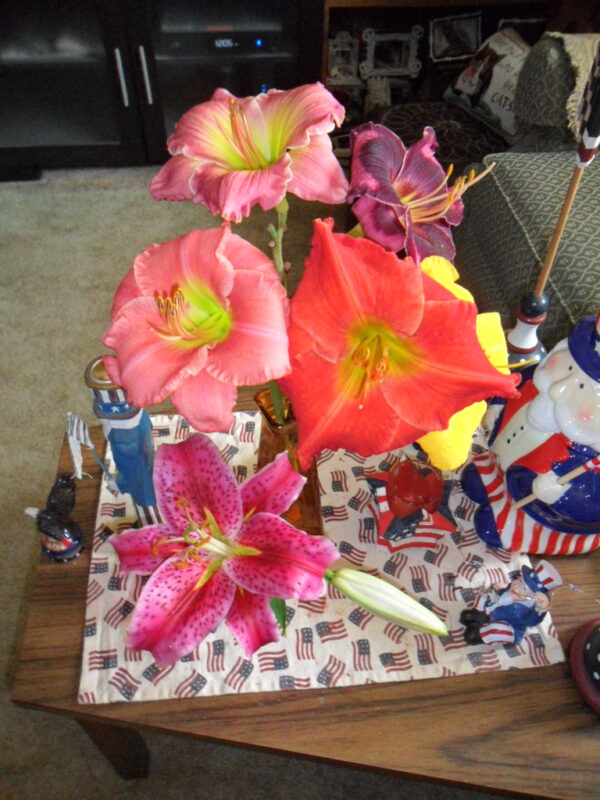
It’s been a cooler summer than average for us, with lots of drier air than the usual July and August swelter, about which I have no complaint whatsoever! Overnight temps dropped to the low 50s last week, and I was shivering in my shorts when I went out soon after dawn to deadhead the daylilies. Delicious!
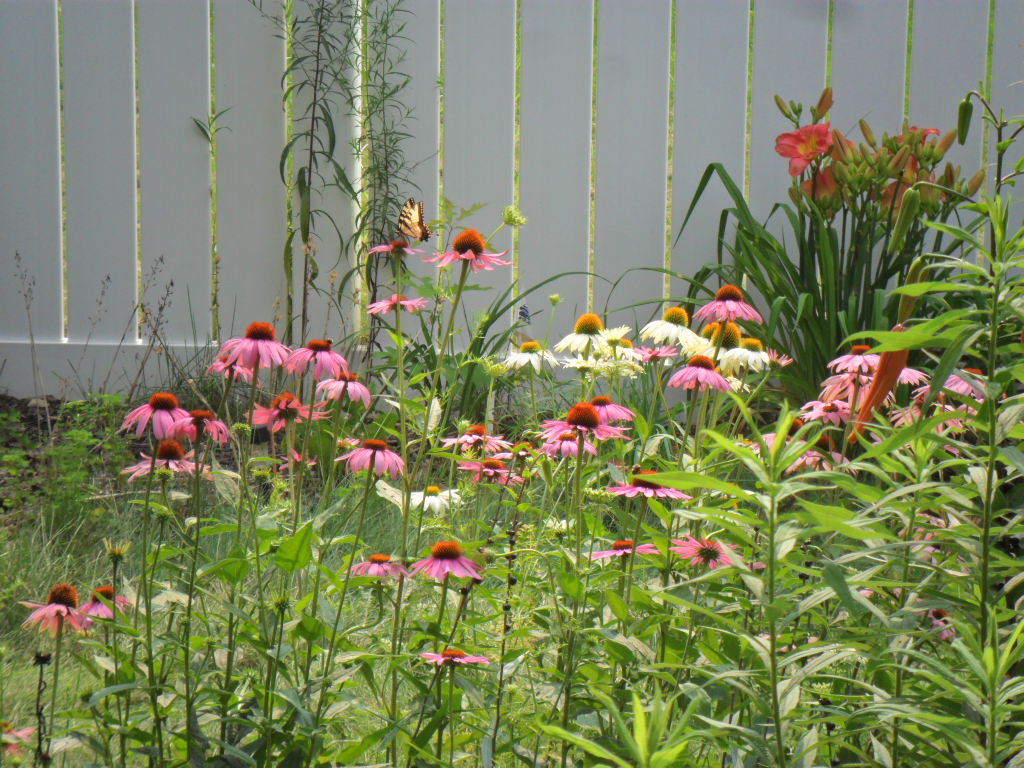

3 comments, add yours.
Irmgard Dering
It looks like paradise! I can’t imagine how many hours of work you put in, to make it look that beautiful!
Thank you!
Jacqueline
Alex, I always love your flower garden up-dates. What beauty, diversity, and robustness lives all around you. Shows what nurturing a garden can produce.
Laurien
Hi Alex! You have really outdone yourself this time with so many beautiful photos of your plants! I enjoyed them all! Happy Belated Birthday! I am guessing Saturn has something to do with that knee surgery. Hopefully you will be back in shape to work in the garden by next spring! Thanks for this, I enjoyed it very much!